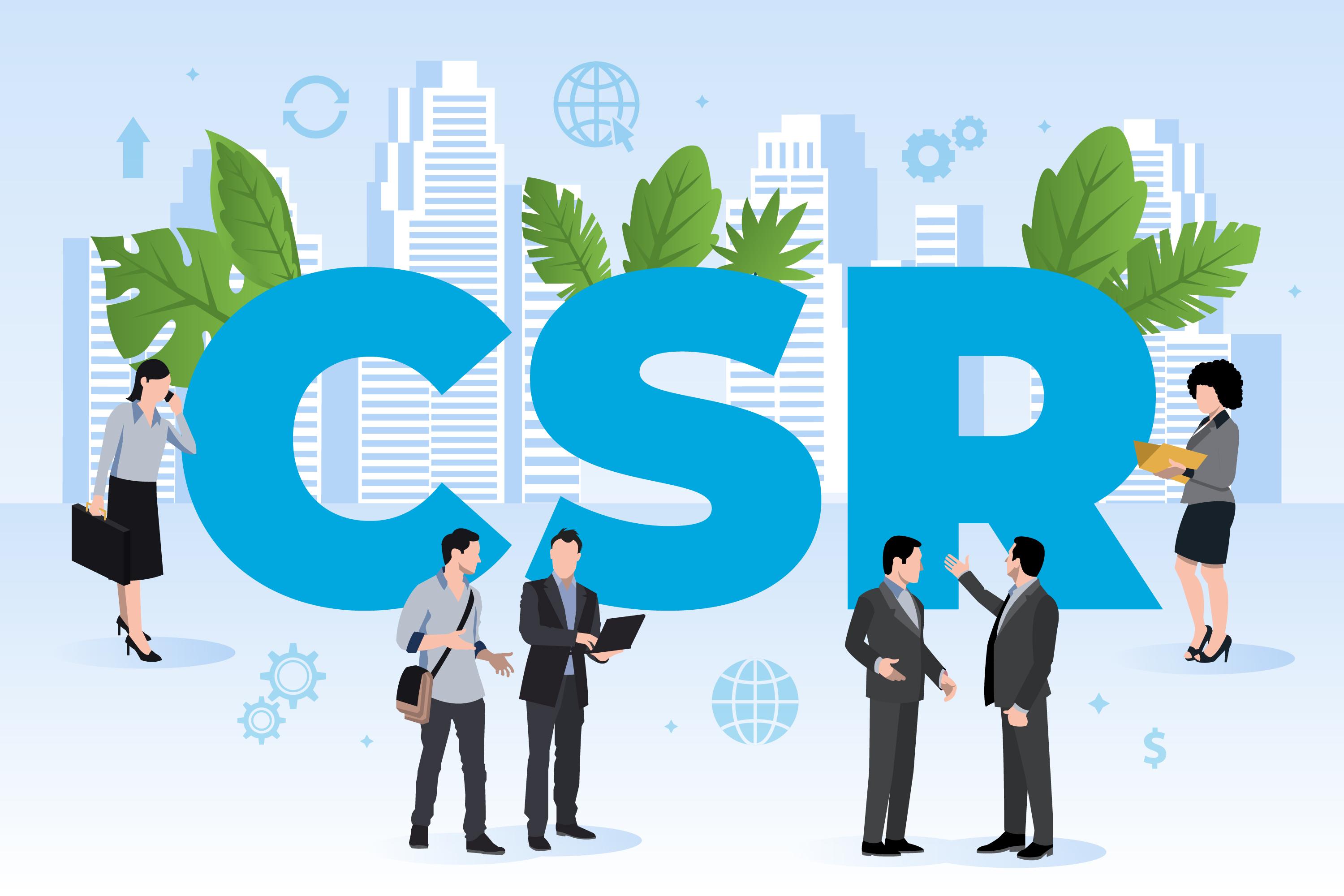
Introduction
Going by the contemporary scene, with globalization, corporations have surely shifted from their traditional dictum of profit maximization. MNCs wield enormous economic and social power; hence, there is a spurt in CSR, as it amalgamates business goals with social and environmental concerns. This essay analyses the legal frameworks governing CSR and barriers in their effective implementation on a global front.
Evolving Landscape of Corporate Social Responsibility
Global business has experienced a new dimension: globalization has allowed multinational corporations to spread their tentacles across the world and benefit from global resources and markets. In so doing, new visibility around the globe has exposed corporate practices to such scrutiny for their social impact on the business environment. Therefore, corporate social responsibility became an important mandate for MNCs, requiring them to consider their responsibilities to a larger audience: employees, local communities, and the natural environment, apart from shareholders.
CSR stipulations had their origins in the United States with the passage of the Community Reinvestment Act in 1977, which mandated that banks address the actual credit needs of their communities. Since then, most countries have laid down some diagnosed stipulations of CSR imposed upon them due to certain cultural, economic and political factors. The requirements vary from more prescriptive requirements, such as that of India’s Companies Act 2013, to be followed for the CSR spending of some companies, to the European Union’s non-financial reporting directive, which is more flexible in its application.
The complexities of CSR are ruled by a very textured legal framework ranging from international agreements and national legislation to case law. Globally, there are standards like the United Nations Global Compact and the OECD Guidelines for Multinational Enterprises, which define expectancies in responsible business conduct; further, International Labor Organization conventions add to the same.
Countries have enacted various national laws and regulations for addressing CSR-related issues, which include protection of the environment, labor rights, human rights, and decisions against corruption. There are a few examples of the laws and regulations passed by countries on CSR, and one is by the European Union, which has enacted the Non-Financial Reporting Directive, whereby large companies must be compelled to disclose information concerning any social and environmental impacts arising from their activities. By allowing foreign individuals to sue companies in U.S. courts for violations of international laws, including human rights violations, the Alien Tort Statute (ATS).
Case law also is a critical factor that influences how the principles of CSR are construed and applied in legal arenas. Legal precedents can supply the case examples and influence corporate behavior as it turned out in the case of Massachusetts v. Environmental Protection Agency, a keenly anticipated ruling in which the Supreme Court held that the Environmental Protection Agency has the authority to regulate the emission of greenhouse gases.
In the case Doe v. Unocal Corporation, for example, the Ninth Circuit Court of Appeal set this precedent of making a corporation liable for aiding and abetting the Myanmar military in human rights abuses.
Frameworks of Corporate Social Responsibility

- India: The Companies Act 2013
India is claimed to have the most extensive and regulated CSR regime in the world. Under Companies Act 2013, companies that have a net worth greater than INR 500 crore, turnover greater than INR 1,000 crore, or net profit higher than INR 5 crore should spend at least 2% of the average net profits made during the 3 preceding years on CSR activities. This Indian mandate has put CSR as a typical practice and has forced companies to include social and environment issues into their activities.
However, despite its many merits of the companies justified to contribute to the society’s development, the framework has also been criticized by some. Some individuals believe that since the CSR spend will be statutory, organizations might get into a minimum compliance mode, that is, without truly incorporating CSR as one of their business strategies. Furthermore, the focus is on the expense and not the impact.
- European Union: Non-Financial Reporting Directive
The NFRD of the EU requires the large public –interest entities to provide such non – financial information that includes disclosures on environmental and social matters, employees – related matters, human rights, anti – corruption, and bribery issues, etc. This directive has been brought into place to enhance the transparency of the business concerns and to help the businesses operate with sustainable models.
Furthermore, this flexibility in choosing the reporting standards applied, such as GRI or the UN Global Compact, allows for integrating CSR into corporate strategy in a comprehensive notion of sustainability. However, the optional nature of applied reporting standards and important depth and quality differences of disclosed information are likely going to limit the actual impact of the directive on inducing profound change in most companies.
- United States: Current Problems of the Sarbanes-Oxley Act and Beyond
CSR in the US is dominantly driven by the interaction of the legal framework and market-induced factors. The Sarbanes Oxley Act of 2002, while mainly dealing with corporate governance and financial disclosures, indirectly encourages CSR by bringing about ethical business conduct and a sense of accountability among firms. The Dodd Frank Wall Street Reform and Consumer Protection Act, 2010 has several provisions in relation to conflict minerals. It asserts that companies have to disclose whether their products have been manufactured using certain minerals that originated in conflict nations.
Even within this legislation, the U. S. follows a voluntary model of CSR, depending upon market forces and stakeholders’ requests to promote corporate responsibility. Such voluntary models for CSR provide opportunities to be innovative but can cause discrepancies in practicing CSR and its outcomes within industries and among the corporations.
Legal Challenges
Even with the increased laws and regulations, the implementation of corporate social responsibility remains a big challenge for multinational companies. The primary issues of concern include the following:
- Regulatory Fragmentation: The lack of a consolidated international framework and the different localised laws and regulations can create a multitude of compliance issues and inconsistencies for multinationals operating in different regions.
- At no time is it easy to ensure that laws related to CSR are upheld and to enforce the responsibility of corporations over their acts, particularly with complex worldwide supply chains, and in those countries that lack good governance systems.
- Meaningful transparency and accurate disclosure of CSR-related information remains elusive, as companies have an incentive to engage in greenwashing and to scope or spin positive effects and downplay those which are negative.
- With the existence of conflicting interests, a multinational corporation often has difficulty engaging with local communities, civil society organizations, and employee groups.
- Capacity and Resources: Deep CSR practice often requires an investment in time, staff, and money that may present capacity challenges to some smaller businesses or businesses in developing nations to a great extent.
Towards a more effective and sustainable Corporate Social Responsibility Framework
All this calls for the following points to materialise and help overcome these challenges to develop a more effective and sustainable CSR framework:
- Efforts towards establishing harmonised global standards and recommendations, also knowing the UN Guiding Principles on Business and Human Rights, are leading to a more consistent and coherent legal framework concerning corporate social responsibility.
- Strengthened enforcement and accountability, in this case, mean strengthened systems of monitoring, reporting, and enforcement of laws or regulations on issues that pertain to corporate social responsibility. This would be through third-party audits and grievance mechanisms that help enhance corporate accountability.
- Transparency and disclosure: It includes verbose and detailed CSR reporting, as per the operation of the EU Non-Financial Reporting Directive, based on standardised requirements, to ensure greater transparency in effecting stakeholder decision-making.
- To champion and facilitate collaboration between multinationals, governments, civil society, and local communities for their effective engagement in the optimal alignment of interests towards the development of more inclusive and sustainable CSR.
- Training and resource mobilisation: technical assistance; commit finance and other efforts to build the capacity of enterprises, in particular small and medium-sized enterprises and enterprises operating in developing countries, for the effective implementation of CSR.
Case Studies

• Unilever’s Sustainable Living Plan is an outstanding example of strategic integration of CSR. It has committed to separating growth from the environment and improving the positive social impact. As an outcome from this sustainability approach, the company has arouse innovation in products and supply chains, bringing business growth with very distinctive environmental and social benefits.
• Patagonia is a company producing outdoor clothing, with its corporately social responsibility in the business strategy, where the prime focus is generally on environmental sustainability. The company gives 1% of its sales to the betterment of the environment and has asked the consumers to consume cautiously with its
• The Tata Group in India is a sterling example of how corporate social responsibility (CSR) is deeply embedded in the DNA of the conglomerate. Financed by a large portion of the profit generated by the Tata Group, the Tata Trusts support different social projects on education, healthcare, and rural oriented development. This has not only helped to improve the lives of many individuals but made Tata synonymous with honesty and social commitment through a long-term focus on CSR.
Conclusion
In this era of economic globalization, the coverage of corporate social responsibility laws has undergone development to encompass the emerging concerns regarding the increased impacts of transnational corporations on society and the environment. Nevertheless, there remains a test in the successful implantation of these frameworks, thus requiring an integrative approach involving harmonization of international standards, close monitoring, and accountability; ensuring the increased transparency of operations; promoting collaborative work among various stakeholders; and mobilizing funds to support capacity building. Corporations can make significant differences in promoting sustainable development and creating value for all stakeholders by addressing these salient factors of importance.
References
- Diva-portal.org. (2010). [PDF] Corporate Social Responsibility – CSR-legal framework – DiVA portal. [online] Available at: http://www.diva-portal.org/smash/get/diva2:387482/FULLTEXT01
- Researchgate.net. (2021). Reviewing the status of corporate social responsibility (CSR) legal framework. [online] Available at: https://www.researchgate.net/publication/352003456_Reviewing_the_status_of_corporate_social_responsibility_CSR_legal_framework
- Researchgate.net. (2021). Corporate Social Responsibility in the Legal Framework of Global Value Chains. [online] Available at: https://www.researchgate.net/publication/354387743_Corporate_Social_Responsibility_in_the_Legal_Framework_of_Global_Value_Chains
- Lawnotes.co. (2022). Impact of multinational corporations (MNCs) and corporate social responsibility (CSR) on the globalization process. [online] Available at: https://lawnotes.co/impact-of-multinational-corporations-mncs-and-corporate-social-responsibility-csr-on-the-globalization-process/
- Mishra, N. (2022). CSR laws in India – Provision under the Companies Act, 2013 – iPleaders. [online] Blog.ipleaders.in. Available at: https://blog.ipleaders.in/csr-laws-india/
- Doe v. Unocal Corporation, 395 F.3d 932 (9th Cir. 2002).
- Massachusetts v. Environmental Protection Agency, 549 U.S. 497 (2007).
- Scherer, A.G. and Palazzo, G. (2011). The New Political Role of Business in a Globalized World: A Review of a New Perspective on CSR and its Implications for the Firm, Governance, and Democracy. Journal of Management Studies, 48(4), pp.899-931.
- Ruggie, J.G. (2013). Just Business: Multinational Corporations and Human Rights. New York: W.W. Norton & Company.
- Delmas, M.A. and Burbano, V.C. (2011). The Drivers of Greenwashing. California Management Review, 54(1), pp.64-87.
- Freeman, R.E. (2010). Strategic Management: A Stakeholder Approach. Cambridge University Press.
- Jamali, D. and Karam, C. (2018). Corporate Social Responsibility in Developing Countries as an Emerging Field of Study. International Journal of Management Reviews, 20(1), pp.32-61.
- United Nations (2011). Guiding Principles on Business and Human Rights: Implementing the United Nations “Protect, Respect and Remedy” Framework. [online] Available at: https://www.ohchr.org/documents/publications/guidingprinciplesbusinesshr_en.pdf
- Rasche, A. (2010). The United Nations Global Compact: Towards Accountable Corporate Citizenship. Business & Society, 49(4), pp.716-741.
- European Commission (2014). Directive 2014/95/EU of the European Parliament and of the Council of 22 October 2014 amending Directive 2013/34/EU as regards disclosure of non-financial and diversity information by certain large undertakings and groups. [online] Available at: https://eur-lex.europa.eu/legal-content/EN/TXT/?uri=CELEX%3A32014L0095
- Dentoni, D., Bitzer, V. and Schouten, G. (2018). Harnessing Wicked Problems in Multi-stakeholder Partnerships. Journal of Business Ethics, 150(2), pp.333-356.
- Jamali, D. and Karam, C. (2018). Corporate Social Responsibility in Developing Countries as an Emerging Field of Study. International Journal of Management Reviews, 20(1), pp.32-61.
Submitted by Harinibai R., SASTRA Deemed to be University.